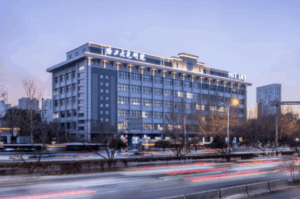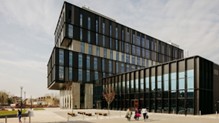The concept of Quyu (区域) in China
Across policy and academic debates, regions are increasingly recognised as key arenas for addressing climate change, demographic shifts, and economic transitions. In Western contexts, they are often conceptualised as functional economic spaces shaped by inter-firm trade, labour mobility, supply-chain integration, or as outcomes of local agency where regional actors initiate and steer development processes (Asheim et al., 2011). This reflects a broader governance tradition that emphasises market dynamics and bottom-up coordination (Morgan, 1997). No longer seen as passive state-level policy recipients, they are reframed as active sites of experimentation and coordination. However, such capacities remain uneven, and non-core regions often lack the institutional and economic foundations for self-sustained innovation (Henderson et al., 2024; Eder & Trippl, 2019). By contrast, China addresses regional disparities through the concept of quyu – a state-defined, policy-driven spatial framework designed to mobilise transformation in strategically important yet institutionally weak areas. What distinguishes quyu from conventional notions of the ‘region’ is its strong and explicit alignment with national strategy. Rather than emerging from functional economic linkages or local agency, quyu is conceived as a governance instrument for bundling spatial, fiscal, and industrial policies. As Zhang and Peck (2014) note, quyu are not simply spatial containers but strategic governance spaces. Chinese scholars conceptualise quyu as hybrid governance formations integrating spatial, administrative, and developmental rationalities. It functions both as a scalar tool to balance regional disparities (Wu, 2017) and as a platform for policy bundling, coordinating fiscal, industrial, and land-use strategies across territorial hierarchies. Quyu often hosts overlapping zones, such as special economic zones, demonstration areas, and innovation clusters, serving differentiated national functions.
Recent work extends this by framing Chinese regions as digitally mediated, relational spaces, where governance is co-produced by the state, platform enterprises, and local actors (Chu & Hassink, 2024). While earlier Western studies emphasised proximity and bottom-up innovation, newer research acknowledges the strategic role of national and regional states in supporting both routine and mission-oriented innovation-even in peripheral areas (Henderson et al., 2024).
Innovation intermediaries
In Western literature, innovation intermediaries are widely recognised as key actors in regional innovation systems, particularly within civic- or market-led models of regional development. They coordinate fragmented stakeholders, facilitate knowledge exchange, and align innovation with broader goals (Howells, 2006; Klerkx & Leeuwis, 2009). They bridge institutional gaps, enable collaboration, and articulate directionality – especially when innovation does not emerge spontaneously through market or network dynamics (Coenen et al., 2015; Schot & Steinmueller, 2018; Mazzucato, 2021). Howells (2006) identifies diverse intermediary forms – from public agencies to university research centres and hybrid platforms – operating across stages from ideation to diffusion. Rather than neutral facilitators, these actors shape innovation trajectories by linking government, academia, industry, and civil society. Recent work highlights new public intermediary models suited to complex, mission-driven fields (Rossi et al., 2022) and their role in aligning innovation policy with practice in transitioning regions (Kitagawa et al., 2025). Yet these perspectives largely reflect Western, decentralised governance contexts. To understand how intermediaries function under different institutional logics, it is necessary to turn to the Chinese case.
In China, many intermediaries operate within the quyu system-state-defined, policy-driven spatial units designed for strategic transformation. Within this hierarchical structure, their role often shifts from coordinating local experimentation to implementing centrally defined missions. This suggests important tensions: while intermediaries may be positioned as local actors, their autonomy and agenda-setting power may be shaped by top-down imperatives. Understanding how they navigate between local responsiveness and national alignment is crucial for comparing intermediary models across governance systems.
Towards a Comparative Research Agenda
Understanding how innovation intermediaries shape place-based development in non-core regions requires attention to the institutional logics, governance structures, and planning traditions that underpin their roles. This blog introduces two illustrative cases – Harbin Institute of Technology’s Advanced Research Institute (HIT-IAR) and Cardiff University’s Social Science Research Park (Spark) – as entry points for a future research agenda. Both are located in historically industrial, non-core regions, yet operate within distinct institutional and governance contexts. HIT-IAR acts as a conduit, translating national strategies into regional programmes (Liu & White, 2001). In contrast, Spark represents a resilient, service-oriented periphery (Nilsen et al., 2022), mobilising local actors, leveraging mixed funding, and enabling bottom-up directionality.
|
|
|
Future comparative research could explore how such intermediaries shape innovation directionality under different state-market-society configurations. Key questions include: How does institutional embeddedness affect intermediary discretion? What governance capacities are required in state-led vs. civic-led systems? And how do regionally specific missions, such as technological upgrading or social inclusion, interact with broader structural constraints? Here, the notion of intermediaries as change agents highlights their capacity to open up opportunity spaces and reconfigure regional development paths (Grillitsch & Sotarauta, 2019). A comparative lens reveals how intermediary forms vary across innovation regimes and what this means for inclusive, mission-driven regional transformation.
Conclusion
This blog highlights the importance of situating innovation intermediaries within specific regional governance frameworks. Rather than viewing them solely as facilitators of innovation, it argues that intermediaries are also active agents in navigating structural constraints and shaping inclusive regional futures (Engelen et al., 2017; Henderson et al., 2023; 2024). The analysis also responds to growing calls for cross-cultural and cross-system dialogue in regional studies, recognising that global challenges require, such as quyu in China, context-sensitive and diverse forms of innovation. While preliminary, this discussion suggests that innovation is shaped not only by market forces or institutional arrangements, but also by the socio-spatial imaginaries through which regions, such as quyu in China, are constructed, governed, and mobilised. A contextual, comparative perspective creates opportunities for mutual learning across different innovation regimes and highlights the need for further research into how place-based intermediaries bridge global missions and local capacities within divergent governance systems.
Offline References:
Mazzucato, M. (2021). Mission Economy: A moonshot guide to changing capitalism. London: Penguin Allen Lane.
Connect with the Author

Qinying Sun received her PhD from Harbin Institute of Technology and is currently an Associate Professor at the School of Information Management, Heilongjiang University, focusing on innovation systems and regional development. She is also an academic visitor at Cardiff University. Her current research compares innovation intermediaries in China and the UK, with a particular interest in how non-core regions mobilise innovation to address societal challenges. Her research has been supported by the National Social Science Foundation of China and the China Scholarship Council (CSC).
![]() :0000-0001-9371-7825
:0000-0001-9371-7825 ![]() : SunQ25@cardiff.ac.uk; sqytoday@163.com
: SunQ25@cardiff.ac.uk; sqytoday@163.com

